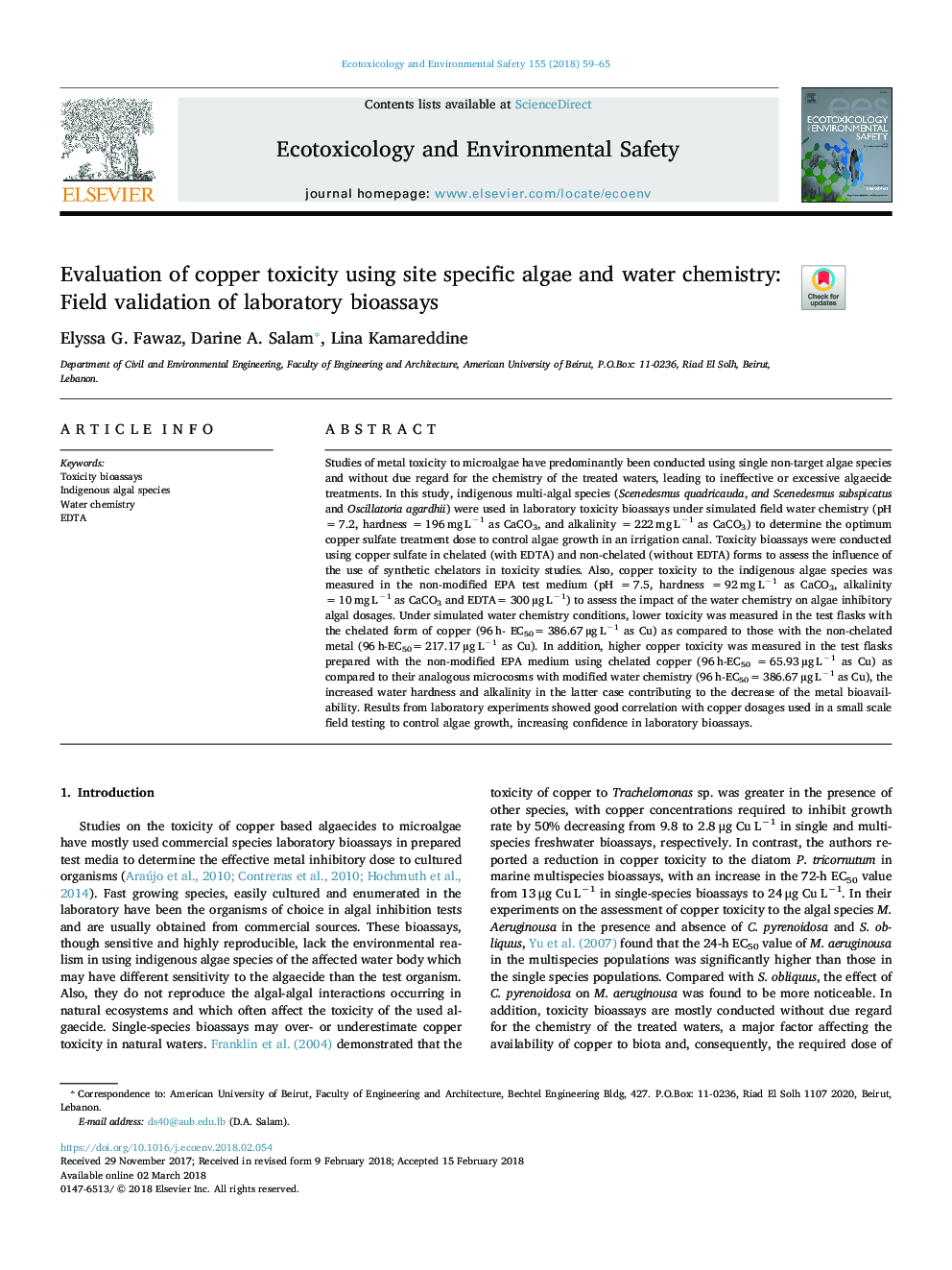| Article ID | Journal | Published Year | Pages | File Type |
|---|---|---|---|---|
| 8853991 | Ecotoxicology and Environmental Safety | 2018 | 7 Pages |
Abstract
Studies of metal toxicity to microalgae have predominantly been conducted using single non-target algae species and without due regard for the chemistry of the treated waters, leading to ineffective or excessive algaecide treatments. In this study, indigenous multi-algal species (Scenedesmus quadricauda, and Scenedesmus subspicatus and Oscillatoria agardhii) were used in laboratory toxicity bioassays under simulated field water chemistry (pH =â¯7.2, hardness =â¯196â¯mgâ¯Lâ1 as CaCO3, and alkalinity =â¯222â¯mgâ¯Lâ1 as CaCO3) to determine the optimum copper sulfate treatment dose to control algae growth in an irrigation canal. Toxicity bioassays were conducted using copper sulfate in chelated (with EDTA) and non-chelated (without EDTA) forms to assess the influence of the use of synthetic chelators in toxicity studies. Also, copper toxicity to the indigenous algae species was measured in the non-modified EPA test medium (pH =â¯7.5, hardness =â¯92â¯mgâ¯Lâ1 as CaCO3, alkalinity =â¯10â¯mgâ¯Lâ1 as CaCO3 and EDTA=â¯300â¯Âµgâ¯Lâ1) to assess the impact of the water chemistry on algae inhibitory algal dosages. Under simulated water chemistry conditions, lower toxicity was measured in the test flasks with the chelated form of copper (96â¯h- EC50=â¯386.67â¯Âµgâ¯Lâ1 as Cu) as compared to those with the non-chelated metal (96â¯h-EC50=â¯217.17â¯Âµgâ¯Lâ1 as Cu). In addition, higher copper toxicity was measured in the test flasks prepared with the non-modified EPA medium using chelated copper (96â¯h-EC50 =â¯65.93â¯Âµgâ¯Lâ1 as Cu) as compared to their analogous microcosms with modified water chemistry (96â¯h-EC50=â¯386.67â¯Âµgâ¯Lâ1 as Cu), the increased water hardness and alkalinity in the latter case contributing to the decrease of the metal bioavailability. Results from laboratory experiments showed good correlation with copper dosages used in a small scale field testing to control algae growth, increasing confidence in laboratory bioassays.
Related Topics
Life Sciences
Environmental Science
Environmental Chemistry
Authors
Elyssa G. Fawaz, Darine A. Salam, Lina Kamareddine,
